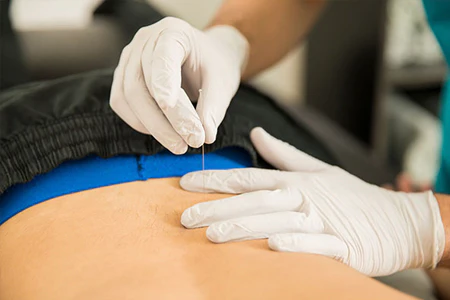
In the past few years, Dry Needling Therapy has become a popular form of treatment for many muscular-skeletal disorders.
It works according to Myofascial trigger points and muscle knots and thus provides pain relief, relaxation, and improved muscle function.
This leads to another often-asked question by a patient contemplating this treatment: How long does a dry needling session last?
Duration of a Typical Dry Needling Session
The duration of a normal dry needling session may take approximately 30-60 minutes, depending on the patient’s condition.
The exact time may differ based on the number of areas treated by the laser and the severity of the skin disorder.
During this first meeting, the practitioner will evaluate what patients need as patients, and a time for each session must be estimated in developing a program to address their condition.
The Dry Needling Process (Step-By-Step)
The dry-needling process involves several steps, each contributing to the overall duration of the session:
Initial Assessment:
The session opens with the researcher conducting a physical, social, and psychological assessment of the patient.
The specified medical history, present signs and symptoms, as well as the overall employment of treatment plans will be addressed by the practitioner. This step generally takes about 10-15 minutes.
Preparation:
Depending on the practitioner’s methodology, the area to be treated will be cleaned to eliminate the possibility of infection.
This step is brief, commonly lasting up to 5 minutes at most, and ideally, it should not exceed 3 minutes.
Needle Insertion:
The practitioner will find all the tender points and then place a thin needle into the muscle.
The insertion process will take 10-30 minutes, depending on the number of points to be treated.
Needle Manipulation:
As soon as needles are inserted they might be rotated to the appropriate position that the client would prefer.
This step can take 5-15 minutes, and the evaluation of the evidence can take up to 10-15 minutes.
Post-Treatment Care:
Once the needles are pulled out the practitioner will advise on what to do in cases of discomfort that may arise after the procedure. This last step takes about 5 minutes.
Frequency and Overall Treatment Time
The Frequency of the dry needling, as well as the total duration of therapy, depends on the condition of the client and their reactions to treatment.
Thus, for acute conditions, patients may need weekly sessions for a few weeks, once or twice a week.
Some conditions may take longer and cause a client to come in for sessions with less frequency, say, because of an ailment.
That is why the total length of the necessary treatment can be from 4 to 10 meetings at least or can take more time according to the outcomes of the patient.
Factors Affecting the Length of Treatment
Several factors can influence the length of each dry needling session and the overall treatment duration:
Which aspects could affect the duration of each dry needling session as well as the number of sessions performed?
Severity of Condition:
More severe or chronic conditions may require longer and more frequent sessions.
Number of Areas Treated:
Making multiple areas receive treatment at the same time will be time-consuming;
Patient’s Response:
Since the goals of therapy differ from one patient to another, the rate at which they improve also differs, as does the time factor regarding the number of sessions.
Practitioner’s Technique:
One should also note that the degrees of experience and technique of the practitioner also play a role in the duration of the session and, as a result, the overall amount of time that the patient spends within the practitioner’s care.
Rama Care’s Efficient and Effective Dry Needling
We ensure that everyone at Rama Care gets the best when it comes to dry needling services we offer as well as dedicated approaches to meet the needs of every patient.
Our professional specialists use the best techniques in ways that can minimise the degree of pain and maximise the outcomes of therapy.
This is then followed by a comprehensive physical examination to identify the required treatment regimen that will yield the best outcome in the shortest time.